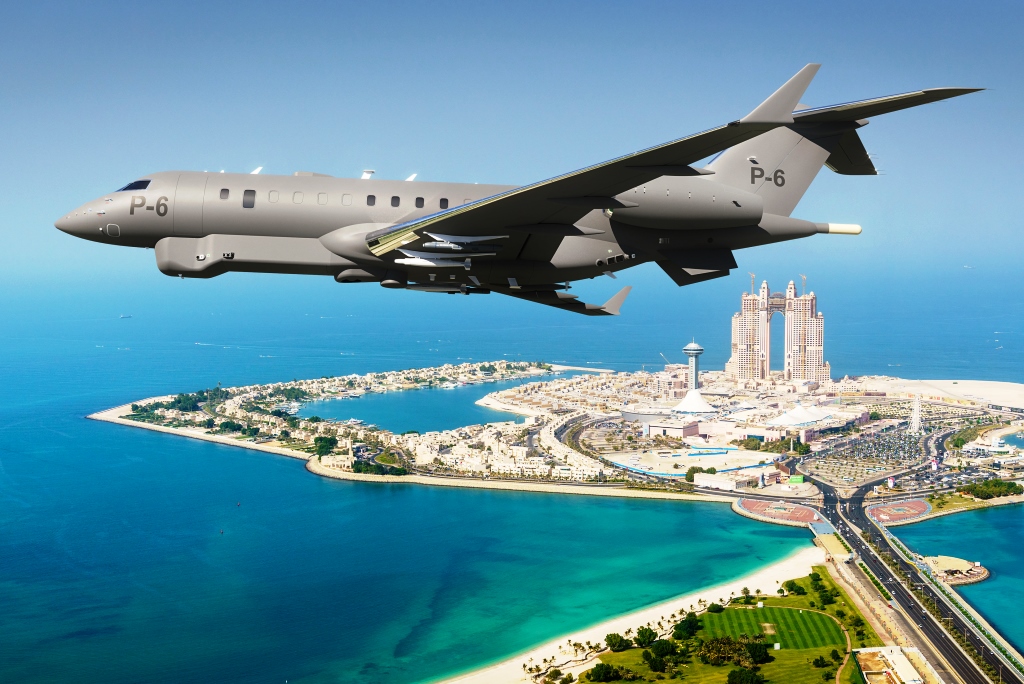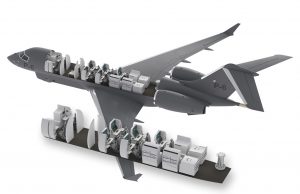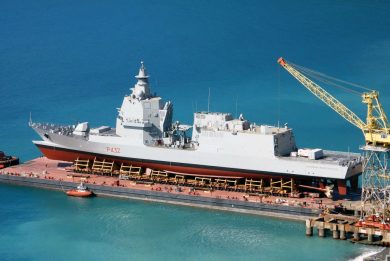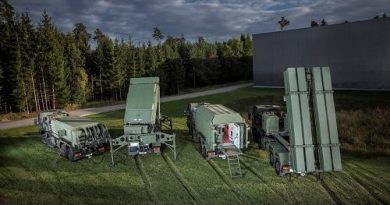
IDEX 2023: PAL Aerospace unveiled P-6 multi-mission maritime patrol aircraft
At IDEX 2023 PAL Aerospace unveiled its P-6 multi-mission maritime patrol aircraft, based on the Canadian Bombardier Global 6500 business jet. With the increasing interest in balancing maritime domain surveillance and anti-submarine warfare against the proliferation of combat underwater platforms, Middle East countries are looking to new aerial platforms as the legacy Boeing P-8A Poseidon is nearing the end of its production cycle.
“It is time to address the next-gen MPA gap,” Keith Stoodley, Chief Executive Officer PAL Aerospace Services Aircraft Maintenance LLC, told EDR On-Line, referring to the debutante P-6 MPA solution. “The P-6 MPA brings next-gen technology, and regional expertise to the table, providing nations with a highly adaptable and advanced blue-water maritime patrol solution. Our strategic partnerships with industry leaders and the synergy of our P-4 and P-6 platforms demonstrate our commitment to delivering exceptional products and services that are tailored to the evolving needs of maritime domain surveillance and anti-submarine warfare.” As part of the global PAL Group of companies, PAL Aerospace Services Aircraft Maintenance is an Emirati-owned company based in Abu Dhabi that will support the ‘Centre of Excellence’ in the UAE for Special Mission Aircraft in-service support, integration, modification, manufacturing, and training.

The new Bombardier Global 6500-based P-6 multi-mission MPA is based on the experience accumulated by PAL Aerospace with special missions configured platforms mainly devoted to maritime duties. The P-6 MPA concept is designed to be highly adaptable to customers’ requirements, featuring an architecture that can readily integrate with an array of systems and sensors from multiple vendors. The Bombardier platform is expected to be equipped with a next generation mission system software integrated by PAL Aerospace, according to company documentation.
PAL and Thales signed a strategic agreement for the development of a new mission management system software on 30 March 2022 during the Defence Services Asia Exhibition & Conference at Kuala Lumpur, Malaysia. “Together we are ready to co-develop the next generation of mission systems that will innovate how multi-mission MPAs save lives, defend territorial waters, and build maritime domain awareness,” said Stoodley at the time of signing.
The agreement between PAL Aerospace and Thales leverages decades of diverse special mission solutions to co-develop mission-ready capabilities. Targeted capabilities include machine learning, computer vision, optionally/remotely piloted aircraft systems support, underwater warfare defence and integration of space-based data into a complete mission lifecycle for dissemination in a common operating picture. According to the joint statement, the development of these capabilities will be based cooperatively at PAL Aerospace and Thales facilities, supporting industry, economic growth, and high-skilled jobs in Canada, UAE, and France.
The P-6 MPA main cabin layout includes five operator workstations, although the aircraft can accommodate between three and eight of those. The fact that the mission management system and workstations arrangement were inspired by those developed for the company’s UAE Q400-based P-4 MPA will considerably ease training issues and crew flexibility. The two platforms are seen as complementary products. The P-4 MPA has been conceived as a littoral ASW aircraft whereas the P-6 MPA is designed as a blue-ocean ASW asset.

Videos and slides presented during IDEX showed a Global 6500 platform equipped with an underbelly extended and large gondola capable to accommodate a flexible bay for air droppable payloads, including weapon systems and SAR kits, alongside sensors and communications antennas. The forward area of the gondola was shown hosting a surface surveillance radar as well as self-protection sensors followed by a multi-purpose bay, while the mid and rear sections hosted an Electro-Optical/Infrared (EO/IR) retractable turret, communications, Electronic Support Measures and communication intelligence (COMINT) antennas, and the remaining self-protection sensors and equipment.
According to the released video, the maritime patrol mission sensors suite will include a latest generation surface surveillance radar, fitted with an AESA (Active Electronically Scanned Antenna)-equipped antenna, and an EO/IR turret alongside ESM , Automatic Identification System (AIS), in addition to an extendable rotary sonobuoys launcher , alongside a magnetic anomaly detector (MAD) system. The aircraft will also be equipped with a defensive aid subsystem including radar and infrared warning receivers, two Directional Infrared Countermeasures (DIRCM) turrets to provide 360° coverage and chaff/flare dispensers. The communications suite includes V/UHF, Link 16 data link, Leo OneWeb satellite communication (SATCOM), L-band Iridium SATCOM and MIMO Mesh IP Line-of Sight (LoS) data link, which antennas are positioned above and underneath the fuselage. A SATCOM antenna (SES/Iridium GX) is also installed on top of the stern vertical rudder. According to available rendering each wing is fitted with two underwing stations that in the image are armed respectively with a guided bomb on the inner pylon and an MBDA Sea Venom/ANL antiship missile on the outer one. In the video the P-6 MPA underbelly flexible bay was shown capable to accommodate up to four lightweight torpedoes.
According to the video, the P-6 MPA will have an unarmed range of 1,200 km with a time on station at this distance of 4 hours. Thanks to these capabilities the platform can patrol a vast area of the Indian Ocean, including the Horn of Africa waters, alternatively spending many hours armed with torpedoes and anti-ship missiles in the Persian/Arabian Gulf and Northern Arabian Sea.
Although company representatives did not explicitly refer to customer requirements in the Middle East region, a number of local air forces are reported to be looking to enhance their MPA/ASW and maritime ISR capabilities. It is known that the legacy P-8A was offered to Saudi Arabia, and other GCC nations have similar surface and underwater requirements. Moreover, with the company having a foot in the UAE and the other in Canada, PAL Aerospace is following closely the Canadian Department of National Defence process to replace its fleet of CP-140 Auroras through the Canadian Multi-Mission Aircraft (CMMA) programme.
Graphics courtesy PAL Aerospace



